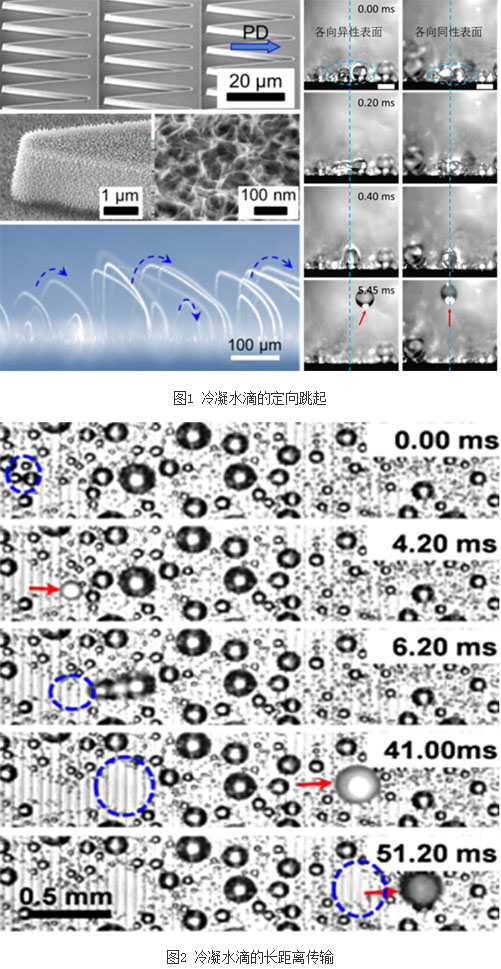
Droplet merging and directional transmission have a wide range of applications in many fields such as microfluidics, printing, oil-water separation, water collection, heat transfer, and ice protection.
Under the support of the National Natural Science Foundation of China, the Ministry of Science and Technology, and the Chinese Academy of Sciences, researchers of the Key Laboratory of Green Printing Institute of the Institute of Chemistry, Chinese Academy of Sciences researchers in the research group of Wang Jianjun’s team have recently been able to control surface icing and retard Systematic studies have been conducted to control the directional transmission of condensed water droplets. By systematically studying the effect of surface adhesion on the surface efficiency of the condensate on the surface of the self-propelled projectile, it was found that the work of adhesion plays a decisive role in the self-driven jump-off behaviour of condensed water droplets on solid surfaces (Soft Matter 2012, 8, 6680-6683); Construct a micro-structure that is equivalent to the micron droplet size, control the movement of the three-phase line, and further reduce the adhesion work between the condensate droplets and the surface, so that the supercooled water on the surface can be quickly removed before the ice builds, constructing the anti-ice surface (Chem. Commun. 2013, 49, 4516-4518); At the same time, a gas-liquid phase contrast surface pattern was constructed on the surface to achieve the control of condensation dripping nucleation sites, and the efficiency of condensing water droplets combined with self-driving jump-off was improved. (Adv. Mater. 2013, 25, 2291-2295).
Recently, they collaborated with researchers from the group's research group Li Quan of Tsinghua University to design an anisotropic microstructure with a low-viscosity surface that allows condensed water and materials to adhere anisotropically. The power of the condensate droplets is driven away from the surface, enabling the micron water droplets to spontaneously jump off the surface in a given direction after they merge on the solid surface (Figure 1).
Studies have shown that the ability to combine directional water droplets is mainly regulated by the geometric parameters of the microstructure of the solid surface and the droplet size, and the directional bounce has a certain number of cumulative effects. The droplets on the solid surface can achieve long-distance directional motion by multiple horizontally oriented leap bouncing similar to the "relay race" (Figure 2). The surface with this special performance has broad application prospects, such as: improving the heat transfer efficiency of surface mass transfer, preparation of self-driven mini-carriers, and efficient anti-icing surfaces. The research results were published in the recently published German Applied Chemistry, Angew. Chem. Int. Ed. 2016, 55, 4265-4269.
Forehead Thermometer,Non-Contact Infrared Thermometer,Infrared Thermometer,Smart Baby Thermometer
Dongguan Yibao Technology Co., Ltd. , https://www.yibaomedical.com